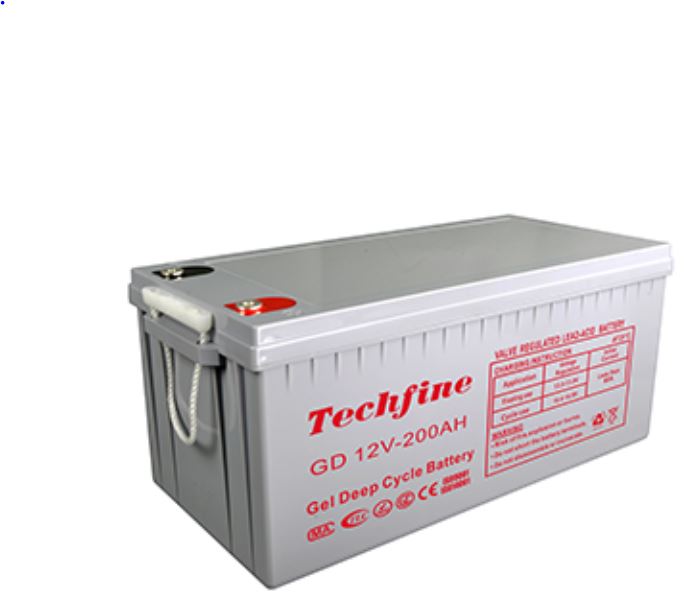
A 200 AH battery is the ideal size battery to use in an RV, boat, or camping. You might be wondering what you will need in size and number of solar panels to charge the 200 AH battery?
There are various factors to consider, and it is not as simple as connecting as many solar panels as possible to the battery. In this article, I will explain the numbers you will have to consider.
As a general rule, a 200 AH battery can be charged in approximately 5 hours using four 100-Watt solar panels, assuming ideal conditions in direct sunlight and no additional load on the battery.
How Fast Can You Charge a 200 AH Battery?
You should only charge a lead-acid battery to roughly 15% of its capacity at any time. It’s preferable to follow the instructions provided by the battery manufacturer. However, for the sake of clarity, I’ll explain how to calculate 15%.
15% of the 200 AH battery is 30 Amps. So it would be best if you did not charge the battery faster than 30 Amps.
15% x 200 AH = 30 Amps
Use The Correct Size Charge Controller
You will require a charge controller capable of handling the voltage generated by your solar panel. The majority of 100 watt 12-volt panels actually contain 30 or 32 cells that generate approximately 1/2 volt each and are connected in series to generate 16 to 18 volts open circuits. When loaded, it drops to about 15 volts, which is sufficient for charging a 12-volt battery.
Four of these, wired in parallel, would be required to charge your battery at slightly less than 30 amps. This requires the use of a charge controller capable of at least 30 amps. Typically, the controller will charge the battery in three stages.
This begins in “bulk” mode, pushing the maximum amount of power into the battery. Then it switches to “absorb” mode, a slow tapering charge that continues until the voltage reaches its maximum, and finally to “float” mode, which is a trickle charge that offsets normal self-discharge and maintains the battery at full capacity until it is needed.
If the charge controller does not have sufficient capacity, it will overload and overheat, causing the charging of the battery to stop.
Depth of Discharge of a 200AH Battery
To maximize the life of a battery, it is recommended that it is never discharged below 50% of its capacity. Even less is preferable. The majority of people appear to agree that 50% is a reasonable compromise between cycle life and cost.
The battery in question is a 12 volt 200 amp hour battery with a total capacity of 200Ah X 12V = 2400 watt-hours.
If you consume 1200 watt-hours, you have depleted 50% of your battery’s capacity, and it’s time to stop and recharge.
How Many Solar Panels are Needed to Charge a 200AH Battery?
We’ve determined that the fastest rate at which you can charge the 200AH battery is 30 Amps.
To determine the amount of solar power required, we multiply the amps by the battery’s voltage to obtain the solar panel wattage required.
30 A x 12 volts = 360 watts
It’s worth noting that solar panels are not 100% efficient, and thus we’ll require more than 360 watts to charge the battery at 30 amps.
360 watts x 0.85 efficiency = 423 watts
Thus, 423 watts of solar panels are required to charge the 200AH battery at a maximum rate of 30 amps.
Four 100-watt solar panels provide 400 watts, which is close to our target of 423 watts.
What about days with bad weather?
The calculation above assumes that your solar panels receive direct sunlight for at least five hours per day; however, cloudy days and even days with no sunlight are possible.
On cloudy days, your solar panel’s output may be reduced by up to 50% to 100% compared to when the panels receive direct sunlight. These days, the panels will not charge the battery as fast, and it may take an entire day or more to charge the battery.
The solution is to increase the capacity of your solar panels if you have the financial means to do so. In our example, adding about 50% capacity, or one additional 100-watt solar panel, provides just that extra bit of spare capacity for days when your solar panels cannot produce power at full capacity.
A charge controller will manage the additional energy generated by the solar panels on days with abundant direct sunlight and prevent the battery from being overcharged. You must ensure that the charge controller is rated sufficiently high to handle the additional solar panel’s power.
Key Takeaways
- Charge a 200AH battery at no more than 30 Amps to avoid damaging it.
- Use a charge controller rated at 30 Amps or more
- Do not exceed a depth of discharge of more than 50%
- Four 100-watt solar panels will charge a 200-amp-hour battery in five hours.
- Increase the number of solar panels to account for inclement weather.
